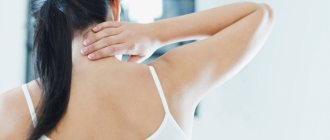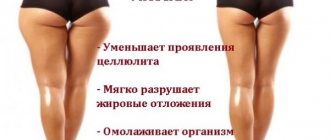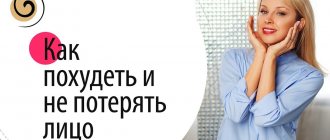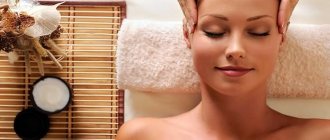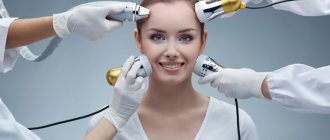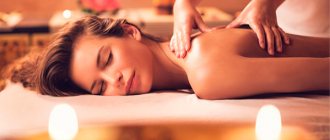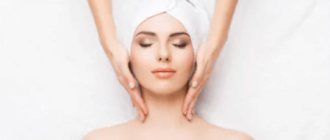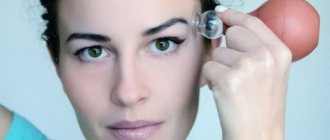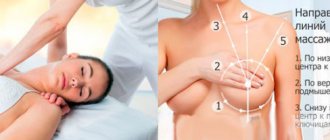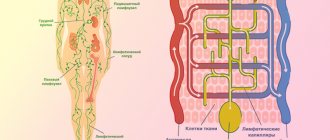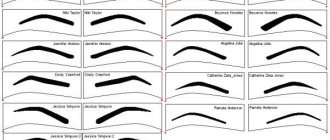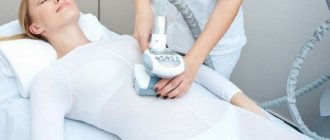Working at a computer and a sedentary lifestyle are the causes of common problems with the cervical-collar area, so the CVZ massage technique is one of the popular techniques of the 21st century.
It is advisable to use the massage technique in case of injuries in the cervical-collar area or intervertebral hernias after a doctor’s prescription. Before this, it is important to first familiarize yourself with the diagnosis, study the medical history, and analyze the indications and contraindications.
Movements characteristic of the technique of performing massage in the cervical-collar area
Stroking.
The technique must be performed with the inner surfaces of both hands, using very light and smooth massage movements with the palms along the center line of the neck. It is useful to stroke the cervical-collar area along the lymph nodes. Using strokes, they achieve the effect of relaxation, getting rid of dead skin cells, relaxing the body and preparing the client for the massage procedure itself.
Types of stroking that are used to massage the neck and back:
- Plane surface stroking. A slightly noticeable movement for the client in the collar area with a relaxed hand. Before performing plane surface stroking in a massage of the cervical-collar area, it is useful for the massage therapist to shake and relax his hands.
- Planar deep stroking. Similar to flat surface stroking, but done with more force.
- Embracing continuous stroking. The massage therapist's brush slowly and tightly grasps the treated area and slides towards the center. The movement of the hand(s) should be slow.
- Embracing intermittent stroking. Similar to grasping continuous stroking. Grasping and squeezing is done with short, intermittent, rhythmic massage movements.
Ironing
The palm is bent at a right angle. The movement is made by the dorsum of the phalanges of the fingers.
Rake-like movements
The masseur makes movements with fingers placed in a rake-like manner.
Drilling
During reception, the palm should be on the selected part of the spine so that it is between the thumb and index finger. The thumb is placed in the back, and the rest are made in circular movements along the spine.
Rubbing
The technique is based on shifting the skin under the massage therapist's hands; they are similar to rubbing, but are more intense. This technique allows you to warm up tissues, muscles, joints, improve blood circulation, blood flow, accelerate the removal of toxins from the body, and have a preventive effect against the development of osteochondrosis and other diseases. The use of rubbing will increase the tone and contractile function of the muscles of the massaged area. It is necessary to remember that massage oils and gels reduce the force of rubbing and its warming effect. The massage therapist should apply equal pressure while applying the movement to each point of the cervical or collar area, but be careful in areas with delicate skin so as not to provoke pain. Rubbing is an intense and strong movement, but it should not cause pain in the area being massaged. If you want to enhance the effect of rubbing, increase the angle between your palm and your back or neck. It is useful to alternate rubbing with stroking.
Rubbing is divided into superficial and deep, continuous and intermittent.
Types of rubbing that are used to massage the neck and back:
- Straight-line – rubbing with the pads of the massage therapist’s four fingers along the spine and neck.
- Circular – displacement of the skin using circular massage movements using the fingers or the base of the palm.
- Spiral - rubbing in a spiral using one or both hands. The spiral rubbing technique is useful for massaging the trapezius, paravertebral and supraspinatus fossa muscles.
An effective method is combined rubbing in the neck-collar area. The technique involves combining longitudinal rubbing with the edge of the palm (with one hand) and with the fingers (with the other hand).
Kneading
Consecutive grabbing, lifting, squeezing, kneading, rolling out muscles. There are longitudinal kneading (along the muscle), transverse kneading (across the muscle). The movement can be performed with the pads, phalanges of the fingers, and palms. Kneading should be done at a slow pace. Massage gel and oil weaken the effect of the technique, as well as when performing rubbing. With each session it is worth increasing the intensity of kneading. This technique takes up the largest part of the massage of the cervical-collar area.
Types of rubbing that are used to massage the neck and back:
- Longitudinal - carried out with straightened fingers along the muscle fibers.
- Transverse - carried out across the muscle fibers.
Auxiliary techniques. Felting, pressing, rolling, sliding.
Vibration
This massage technique can be used using the massage therapist’s fingertips, brushes, bases of the palms, and fists. Reception of vibration consists in the implementation of continuous or intermittent oscillatory movements. Intensive movements allow you to achieve benefits in the form of increased muscle tone in the neck-collar area, calm vibration gives a relaxing effect. To enhance the effect of vibration, it is worth reducing the angle between the fingers, palm and the area being massaged.
Vibration can be continuous, intermittent, stable, superficial, deep, labile.
Types of vibration that are used for neck and back massage:
- Continuous - during the movement, the hand, edge of the palm, tips or phalanges of the fingers do not come off the massaged surface.
- Intermittent - rhythmic blows on the massaged surface. Chopping is done along the muscle fibers. It is important not to chop with closed fingers, as this may cause pain for the client.
Additional techniques: shaking, shaking, patting.
Striking techniques
Typically, percussion massage techniques are used after vibration.
- The simplest technique used to massage the back and neck is tapping with the fingers of both hands.
- Chopping with the edge of the palm (one or two at a time) in the collar area.
- Fist clapping. The fist should consist of 4 fingers, and the little finger should be retracted.
A little anatomy
Why is the neck so vulnerable and often suffers from injuries and various diseases? It's all about the complex anatomical structure of this part of the body, where many organs and structures that are vital for humans are concentrated in a small area:
- The spinal column in the cervical region is represented by seven vertebrae of a slightly elongated saddle shape. Two of them - the atlas and the axis - give a person the opportunity to rotate his head and tilt it in different directions. The small size of the segments, their relative fragility and high mobility often cause various injuries. Protrusions of the interdiscal cartilage layer with age lead to the development of osteochondrosis, spondylosis or various impingements, accompanied by limited mobility and pain.
- 32 different types of neck muscles help to move, speak, swallow, breathe, hold the head upright, the weight of which on average reaches 4 kilograms and increases sharply when tilted.
- 70-80% of the blood flows to the brain through the carotid and vertebral arteries located in the neck. These vessels nourish the muscles and tissues of the head, thyroid gland, and the corresponding part of the spinal cord. Venous outflow occurs through the subclavian, external and internal jugular veins.
- The spinal cord is reliably protected by a bone frame of vertebrae. It is an important part of the central nervous system, transmits impulses from the brain to the peripheral parts, ensures human life, controlling the heartbeat, breathing, digestion, and motor functions. In the cervical area, the seven largest nerve plexuses originate from it, through which sensitive signals go to the diaphragm, skin and muscle structures.
- Lymphatic trunks in the neck run along the jugular vein, forming superficial and deep nodes. Here, the lymph flowing from the mouth, nose and inner ear is cleansed and special protective bodies are produced that help cope with infections.
- The pharynx is involved in breathing, digestion, voice formation, and removes harmful substances out through the gag reflex and cough.
- The larynx controls air flow, human breathing parameters, performs a sound-producing function, and also stops food particles and foreign bodies, preventing them from entering the lower respiratory tract.
- The trachea conducts air to the lungs, pre-warming and purifying it.
- The thyroid gland produces hormones that stimulate metabolic processes, control the proper functioning of body systems, and regulate a person’s psycho-emotional state.
- The esophagus promotes the movement of the food bolus into the stomach, while simultaneously protecting against reflux esophagitis.
A large number of nearby organs are interspersed with connective tissue membranes called fascia. They create a kind of soft skeleton, performing a supporting function, and isolate nearby areas from each other. This allows you to avoid intertwining of blood vessels, muscles, nerves, bones, preventing gross violations of their functions. It is necessary to massage the neck taking into account these structural features of the body, so as not to harm human health and not aggravate painful symptoms.
Method of performing neck massage
- Before starting a session, always check with the client about any contraindications to the procedure.
- Place the client on a chair in front of a massage table with a cushion
- The patient should take a position so that the forehead touches the pillow and the chin touches the chest. Hands in front of you.
- Perform 7 strokes between the head and shoulders
- Perform 7 rubs
- Perform push-ups, gradually increasing pressure with the edge of your palm
- Do kneading 5-7 times.
- Massage the trapezius muscle with the entire surface of the palm, 5-10 times.
- Light circular massage of the shoulder joints 5-7 times.
- Perform vibration reception - up to 15 seconds.
- Stroking the entire collar area 5-7 times.
What rules of neck massage should you remember?
- The neck is a delicate area with small muscles, so you need to massage it more carefully and softly than the back or legs.
- During the massage, do not touch the area above the spine. All movements are performed next to it - in the paravertebral region.
- Make sure the person relaxes and does not hold their breath. If your actions cause discomfort and pain, change the technique or bypass the painful area.
- Don't work long hours. The massage time for the cervical-collar area is 5–10 minutes.
Features of performing therapeutic massage of the cervical-collar area
- The procedure must be carried out in a comfortable environment for the client and the specialist.
- For good gliding of hands, use oil.
- The time required to complete the ShVZ for children is up to 15 minutes. For adults – up to 30 minutes.
- To achieve maximum effect and benefit, it is recommended to conduct a course of 15 sessions.
- The frequency of sessions depends on the problem and purpose: every 1, 2, 3 days.
- The procedure should not cause acute pain or discomfort. It is necessary to monitor the reaction and requests of the client.
- After completing the procedure, help the client stand up smoothly without making sudden movements.
Manual therapy
The goal of the course is to restore mobility to the vertebrae and improve the quality of life by reducing pain discomfort. It must be performed by a qualified specialist. He removes tension in the muscles, carefully straightens the curvatures in the vertebrae, and straightens the tendons.
Indications for massage are:
- pathologies of the spine of a vertebrogenic nature;
- the presence of functional blockades, manifested by limited mobility;
- consequences of dislocations, fractures and traumatic brain injury.
Important!
Before the procedure, you should be warned about taking painkillers, aspirin and other medications.
The procedure includes 3 stages: relaxation, mobilization and manipulation. Relaxation is carried out to simultaneously relax the soft tissues and increase muscle tone. After relaxation, the desired musculoskeletal segments will become available for mobilization. This procedure involves performing passive actions, which may be accompanied by crunching and clicking sounds. There may be pain in the pathological area.
The manipulation is aimed at restoring joint mobility. With sharp movements, the specialist “puts” the vertebra in place. During this period, the blood flow of lymph and cerebrospinal fluid is resumed, which contributes to a gradual decrease in intracranial pressure. The course involves 5-10 sessions.
How to properly massage the collar area for children?
The treatment procedure is indicated for children starting from infancy, as an effective remedy for:
- weakening of the muscular corset of the back and neck
- insomnia
- headaches, migraines
- osteochondrosis
- manifestations of vegetative-vascular dystonia
- delays in speech development
- deterioration of the cardiovascular system
- circulatory disorders
- consequences of birth injuries
- respiratory diseases
- partial loss of voice
- swelling, poor lymph flow
- reduced immunity
- diseases of the gastrointestinal tract
- deterioration of hormonal levels
Health-improving exercises and therapeutic massage of the cervical-collar area are indicated for every schoolchild, which will make it possible to have a preventive effect on the development of osteochondrosis and scoliosis in young and adulthood. And for infants it can often replace a course of drug treatment.
Recommendations and prohibitions
Neck massage is prescribed as a mandatory element of physiotherapy for poor posture and certain diseases associated with the neck, spine and head.
Psychologists who claim that discomfort in certain parts of the body arise due to a psychosomatic disorder recommend light preparation before the massage:
- Pull your head into your shoulders as much as possible so that they rise almost to your ears.
- Lower them sharply.
- Repeat several times to release some of the tension.
Sports doctors recommend neck stretching exercises after a strenuous workout. This procedure is also useful for everyone as a prevention and treatment of cerebral blood supply disorders, especially with a lifestyle with low activity and sedentary work.
According to statistics, more than 70% of school-age children suffer from crooked posture. Therefore, they are also shown manipulations that relieve tension in the collar area and neck.
The use of self-massage is prescribed in the following cases:
- Bad mood,
- discomfort in the shoulder girdle area,
- pain and stiffness in the neck,
- overwork,
- sedentary work,
- hypertension,
- vegetative-vascular dystonia (VSD),
- insomnia,
- long-term systematic physical activity.
- headache,
- osteochondrosis.
Contraindications:
- high body temperature,
- high blood pressure,
- period of decompensation of certain diseases,
- exacerbation of a chronic illness,
- inflammatory processes,
- sclerosis,
- disturbances in the functioning of the heart muscle,
- dermatological pathologies.
How is collar area massage done for infants?
- Sessions are given to a child who has reached 2 months. The procedure is contraindicated for children under this age.
- Place your baby in a tummy-lying position
- Apply baby cream or massage oil to your baby's skin
- use stroking techniques and gentle kneading
- make slow, smooth movements
- massage the neck area from top to bottom
- massage the collar area in the direction from the spine to the shoulder blades
- The session time should not exceed a quarter of an hour
A few important rules
Before starting relaxation therapy, you need to clearly understand that professional manual massage should only be performed by properly trained specialists. And what a person can do for himself or his loved ones is called relaxation; it is no less useful, but still differs in the technique of execution. In this case, you need to consider:
Nerve plexuses in the form of nodules cannot be treated; do not squeeze too hard or try to twist muscle tissue;
The main rule is to relax the person and relieve accumulated fatigue.
How to massage the cervical-collar area using intensive technique?
Before the session, make sure that the client does not have subluxations, mobility of the cervical vertebrae, spinal problems, pronounced wounds or irritation. Find out if there are any contraindications to the procedure!
- stroking 10-15 times
- stroking the periosteal fossa (the depression on the back surface of the scapula)
- vibration, patting (10-15 times) of the periosteal fossa
- stroking (10-15 times) in the direction from the spine to the armpits
- rubbing, kneading the trapezius muscle (10-15 times)
- vibration with fingers and palm edge (10-15 times)
- stroking the entire back
After an intensive treatment technique session, it is helpful to cover the client with a warm towel and allow them to rest for 3-5 minutes.
Contraindications to the procedure
Massage of the cervical area is not such a harmless manipulation. It has been precisely proven that during the procedure there is a direct or indirect effect on vital anatomical structures: muscles, nerve endings, lymphatic and blood vessels, internal organs, the endocrine system, even the spinal cord and brain. Neglecting contraindications can lead to a sharp deterioration in the patient’s health. Therefore, before the course you need to consult a doctor and undergo a thorough medical examination.
Absolute contraindications to neck massage are:
- oncology;
- thrombosis;
- tuberculosis;
- venereal diseases;
- HIV infection;
- osteomyelitis;
- heart failure;
- atherosclerosis;
- tendency to bleed.
The doctor will also be against neck massage if:
- inflammatory and infectious processes in the acute stage;
- fever, elevated temperature;
- hypertensive crisis or very low blood pressure;
- heart or kidney failure;
- acute abdominal pain;
- nausea, vomiting;
- allergic rash or swelling;
- displacement or instability of the cervical vertebrae;
- skin rashes of infectious origin;
- some diseases of the epidermis;
- pregnancy;
- uterine and menstrual bleeding, conditions after childbirth, abortion or miscarriage.
In these cases, the ban will be temporary. As soon as the patient’s health improves, the procedure will become available to him and will not cause harm.
Techniques for performing massage of the collar area using devices
A significant part of people in the 21st century work in offices and spend at least 8 hours every day in a sitting position, which does not give the body health and well-being. Neck and back massage is recommended for almost every office worker in the absence of contraindications. Ideally, CVZ massage should be done once a week to relieve tension and prevent the development of osteochondrosis and other diseases. Homemade devices for self-massage of the cervical-collar area, which anyone can use, will help with this.
The butterfly is a compact device that provokes nerve contractions using safe electrical impulses. The butterfly allows you not only to relieve tension from the back, neck and shoulders, but also to reduce the volume of fat deposits.
A hand massager is a compact, inexpensive and easy-to-use device with a long handle, which makes it easier to carry out the procedure in hard-to-reach places.
The massage belt, like the collar massager, is securely attached in the cervical region and covers the entire cervical-collar surface and effectively affects a person using various vibration modes.
The pillow-massager is convenient to use in the car, in the office, at home. A simple evening ritual of relaxing on the sofa can be turned into a useful procedure that will allow you to relax after a hard day and prevent the development of osteochondrosis and other diseases of the spine.
Each of us saw Kuznetsov’s applicator at his grandmother’s place. It is a mat with small rosettes with spikes that can be used for any part of the body. Perfectly improves blood circulation and accelerates lymph flow. The applicator is indicated for use by almost everyone and at any age.
The technique of cervical-collar massage is one of the most popular techniques of the 21st century, which is actively used for the health of adults and the proper development of children!
Author of the article:
Practicing: 15 years, Teaching: 8 years
Self-massage
You can do a shoulder massage at home yourself.
- To warm up the necessary muscles, move your head in a circle.
- Then make circular movements with your fingers, starting from the area behind the ears, gradually going down.
Important! You should not touch the spine, this will only worsen the condition.
- Massage your shoulders one by one with your fingers, starting from the bottom of your neck. With your right hand you need to massage the opposite side, that is, the left shoulder. Do the same with the right shoulder.
- Proceed to tapping movements with your fist, but it is not recommended to use a lot of force. Movements should be rhythmic and straight.
- Self-massage also ends with stroking. You should not massage a dislocated joint yourself; only light pressure is allowed.
It is recommended that you consult a professional to learn how to do shoulder massage yourself. The massage manual created by Dunaev is used as a hint. His therapeutic method is considered one of the most effective.
Soothing the scalp
Classic head massage is used to stimulate blood flow and metabolic processes. This therapy helps relieve headaches and stabilizes blood pressure, which has a positive effect on human health. For traumatic lesions, suction head massage is actively used, which accelerates the movement of lymph and blood, relieves swelling and heals damaged tissue.
First of all, they begin by massaging the scalp by moving areas of the skin in the front and side, smoothly moving to the back of the head. The frontal area is worked with both hands, slightly stretching the skin. Massaging should be done in a circular motion with your fingertips the same way you usually wash your hair yourself. Using similar techniques you need to treat the entire surface of the head. Complete a relaxing head massage by squeezing it with your hands on both sides.
What is osteochondrosis?
Osteochondrosis is a complex of several degenerative disorders localized in the cartilage of the joints. The whole process looks something like this: the fibrous ring of the intervertebral disc begins to collapse, this leads to the introduction of the nucleus pulposus into it, which quickly swells and then shrinks, drying out - all this makes the intervertebral disc itself flat, and the fibrous ring protrudes strongly or ruptures. As a result, the roots of the spinal cord are compressed and unpleasant sensations appear, such as pain syndromes and disorders of the musculoskeletal system.
In this case, osteochondrosis can develop in different joints. Typically this is:
- cervical region;
- thoracic region;
- lumbar region.
This is explained by the fact that these areas bear the maximum load during the day.
Important: In the place where the inflammatory process occurs directly, spasms, impaired coordination of movements and problems with memory and vision are common.
Roughly speaking, osteochondrosis is the aging and destruction of intervertebral discs and vertebrae. About 60-80% of people suffer from this disease, which is facilitated by poor nutrition of cartilage tissue and hormonal imbalances. Of course, the main reason is the uneven distribution of the load on the spine: trivial things like a bag on one shoulder, uncomfortable shoes, a high pillow or a soft mattress can significantly affect the functioning of the spine.
However, there are much more reasons why osteochondrosis develops than it seems:
- incorrect posture, curvature of the spine, stoop;
- weak muscle corset;
- improper functioning of blood circulation;
- too hard physical work, sedentary lifestyle;
- metabolic disorders, unhealthy diet;
- presence of injuries and damages;
- sleeping in an uncomfortable position, short sleep;
- viral/bacterial infections that occur on a regular basis;
- individual characteristics of the body;
- hereditary factors;
- age-related changes.
Relieving fatigue from the face
Everyday work has a detrimental effect on the aesthetic appearance and condition of the skin, therefore, relaxing facial therapy will come in handy.
A relaxing facial massage begins with the forehead area. You need to massage with smooth movements from the bridge of the nose to the border of hair growth. Do not apply too much pressure or scratch the skin. Next comes the area around the eyes, where you need to be even more careful because the skin in this part of the face is especially delicate. It is better to massage this area with your ring fingers, as the risk of injury is minimal.
Next, the cheeks and nasolabial folds are treated, and the relaxing therapy is completed with the nose, massaging it from the tip to the bridge of the nose. The main thing is to do everything carefully, then the massage will not only relax the person, but also improve the condition of his skin.
